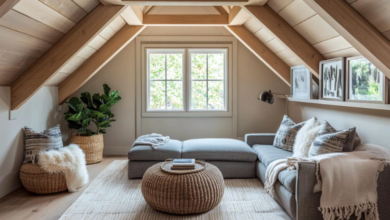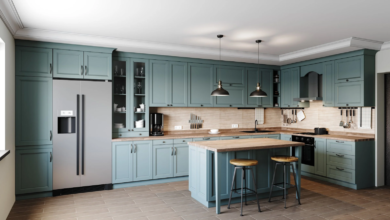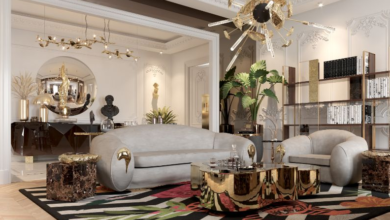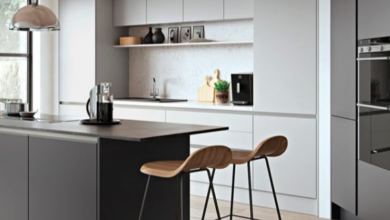How to Buy Rooflights That Brighten and Add Value to Your Property

When it comes to enhancing natural light in your home, few features are as impactful as rooflights. They offer a stylish way to brighten interiors, create a sense of openness, and improve energy efficiency. For many homeowners and property developers in the UK, choosing to buy rooflights is an investment that pays off in both comfort and value.
This guide explores everything you need to know about rooflights, from their benefits and styles to installation considerations and long-term value.
Why Choose Rooflights for Your Home
Rooflights, often referred to as skylights, are architectural features designed to bring daylight into a property through the roof. They transform living spaces in ways that traditional windows often cannot.
Maximising Natural Light
Natural light is proven to improve mood, reduce reliance on artificial lighting, and make interiors appear larger and more inviting. A rooflight allows daylight to enter from above, often delivering up to three times more light than a vertical window of the same size.
Enhancing Property Value
Adding modern rooflights is a desirable upgrade for many potential buyers. Homes with brighter, airier interiors typically command a higher resale value.
Improving Energy Efficiency
Well-designed rooflights are manufactured with energy-efficient glazing that minimises heat loss in winter and reduces overheating in summer. Many models are double or triple glazed with low-E coatings, ensuring comfort all year round.
Boosting Aesthetic Appeal
Rooflights introduce an architectural feature that feels sleek and contemporary. Whether you prefer a frameless design for minimalism or a hinged model for practicality, the result is always a more stylish living space.
Popular Types of Rooflights
When you decide to buy rooflights, it helps to understand the range of styles available. Each type suits different architectural designs, preferences, and practical needs.
Fixed Rooflights
These are non-opening units designed purely to maximise daylight. Fixed rooflights are a low-maintenance choice ideal for rooms that already have adequate ventilation.
Opening Rooflights
Opening rooflights are designed with hinges or sliding mechanisms that allow airflow. They are particularly useful in kitchens, bathrooms, and loft conversions where ventilation is crucial.
Walk-On Rooflights
A stylish solution for roof terraces or balconies, walk-on rooflights are manufactured with toughened glass that can withstand foot traffic. They bring light into the space below while serving as a safe walkway above.
Lantern Rooflights
Lantern designs provide a striking architectural feature, commonly used in extensions or orangeries. Their pitched structure maximises light entry while adding visual drama to interiors.
Modular Rooflights
For large projects, modular rooflights offer flexibility by linking multiple units together. This option creates expansive glazing solutions for modern homes and commercial properties.
See also: Small Home, Big Style: Space-Saving Design Trends
Materials and Glazing Options
The performance and durability of rooflights depend heavily on their construction.
Frame Materials
- Aluminium: Lightweight, strong, and corrosion-resistant, aluminium frames are ideal for sleek, slimline designs.
- uPVC: A cost-effective option that provides good insulation and durability.
- Timber: Traditional and attractive, but requires more maintenance compared to metal or uPVC.
Glazing Choices
- Double Glazing: Standard for most rooflights, offering insulation and safety.
- Triple Glazing: Enhances energy efficiency, especially beneficial in colder climates.
- Solar Control Glass: Reduces glare and overheating by reflecting heat while allowing natural light through.
- Self-Cleaning Glass: Treated with a special coating to minimise dirt build-up, reducing maintenance.
Choosing the Right Rooflight Size
Size matters when it comes to rooflights. Too small, and you may not achieve the desired brightness; too large, and you risk overheating or overpowering the room’s proportions.
As a general guideline, rooflights should cover about 15 to 20 percent of the floor area in the room below. For example, a 20-square-metre living room may benefit from a 3 to 4 square metre rooflight.
Installation Considerations
Before you buy rooflights, it is essential to think about installation requirements.
Roof Pitch
Different models are designed for flat or pitched roofs. Choosing the correct type ensures proper drainage and prevents leaks.
Building Regulations
In the UK, most rooflight installations fall under permitted development, meaning you may not need planning permission. However, compliance with Building Regulations is still required, particularly concerning safety glazing and thermal performance.
Ventilation
If the rooflight will be your primary source of ventilation in a space, consider an opening model with manual or electric operation.
Professional vs DIY Installation
While some flat rooflights are marketed as DIY-friendly, professional installation ensures proper sealing, insulation, and structural integrity.
Rooflight Placement for Maximum Impact
The positioning of your rooflight is just as important as the type you choose.
- Kitchens: Place above food preparation areas to maximise light where it is most needed.
- Living Rooms: Consider multiple units to spread light evenly across the space.
- Bathrooms: Install high-level rooflights to provide privacy while brightening the room.
- Lofts and Attics: Rooflights are often the only way to bring natural light into these spaces, making them essential.
Maintenance and Care
Modern rooflights are designed with durability in mind, but regular care ensures they perform well for years.
- Cleaning: Use a non-abrasive cleaner on glass and frames. Self-cleaning glass reduces the frequency of washing.
- Inspection: Check seals, flashing, and frames annually to prevent leaks.
- Condensation Management: Ensure adequate ventilation in the room to reduce condensation on the glass.
Costs and Budgeting
The cost of rooflights varies widely depending on size, design, glazing, and installation. Fixed units are generally the most affordable, while bespoke lanterns and walk-on models come at a premium.
When budgeting, remember to factor in not just the purchase price but also installation, potential roof alterations, and any upgrades such as blinds or electric openers.
Long-Term Value of Rooflights
Beyond the immediate benefits of light and aesthetics, rooflights offer long-term advantages.
- Reduced Energy Bills: Lower reliance on artificial lighting reduces electricity costs.
- Health Benefits: Increased exposure to daylight can improve sleep quality, mood, and productivity.
- Sustainability: Energy-efficient rooflights reduce carbon footprint, supporting eco-friendly living.
Interior Design Benefits of Rooflights
Rooflights are not only practical but also play a significant role in shaping interiors.
Creating Focal Points
A strategically placed rooflight can serve as a striking design feature, drawing the eye upward and adding architectural interest.
Connecting Indoor and Outdoor Spaces
Rooflights blur the boundary between inside and outside, creating a sense of harmony with the natural environment.
Flexible Lighting Options
Rooflights can be paired with blinds or smart glass technology, allowing homeowners to control light levels and privacy throughout the day.
When to Upgrade Your Rooflights
If you already have rooflights installed, you may wonder when it is time for an upgrade. Signs include:
- Persistent condensation or draughts
- Visible damage to frames or seals
- Outdated single glazing that affects energy performance
- Desire for more modern, sleeker designs
Conclusion
For homeowners seeking to transform their living spaces with natural light, the decision to buy rooflights is one of the most rewarding investments available. They enhance property value, improve comfort, and support sustainable living while elevating interior design.
Whether you opt for a fixed rooflight, a striking lantern, or a walk-on design for your roof terrace, careful planning ensures years of enjoyment and functionality. By considering size, placement, glazing, and installation, you can choose a solution that perfectly matches your home and lifestyle.




